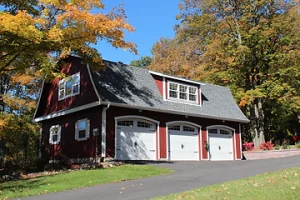The word construction either insights fear or excitement. The fear of the unknown cost, timeline, disarray of everyday routines, and knowing who to trust. The excitement comes from having a vision, putting it on paper, and seeing it come to life. In this blog, we will discuss different topics to help breakdown construction so that you are informed about your options, challenges you might face, tips on protecting yourself against scammers, and ultimately helping you decide whether the time is right for you to start your construction project.
Today’s topic is accessory dwelling units or also known as ADUs. We will be discussing what they are, the different types, and how to go about deciding if adding an ADU to your property is the right decision for your personal situation.
Let’s start with what is an ADU?
The purpose of an ADU is to provide additional living space for family, friends, or rental guests. Historically, they were sought to help alleviate the affordable housing issues. But as time has progressed, they are now being used as a way of generating extra income for homeowners. Regardless of how they are being used, they are subject to approval by the local government authorities.

So when deciding on adding an ADU to your property, where do you start? If you feel comfortable talking with your local government officials, you should contact the planning department in your area to determine if your property is approved for an ADU. If it is, your next step is to find out what restrictions apply such as setbacks, parking requirements, and minimum lot size. In addition to talking with your local municipality, you will need to check your deed restrictions as well as your homeowner’s association, if applicable, because any of these restrictions supersede governmental approval for ADUs.
Finally, do your research on local contractors in your area to begin designing the ADU you would like to build. Utilizing a local contractor ensures they have knowledge of your area, requirements for the ADU, and will know the steps to take to get you through the permitting, inspection, and building processes. Additionally, you can request local references for you to talk with about their experience with that contractor. This allows you to hear what type of work they performed the best on, what their work ethic was, and how they dealt with any difficulties that arose during their project.
If you’re not sure you feel comfortable doing the first steps by yourself, then go straight to researching and contacting local contractors. They will be able to talk you through the process and explain all aspects of building an ADU in terms that are very understandable to the layperson.
One important factor to make sure you check is whether or not the contractor is licensed and insured. There are a lot of handymen that claim to be contractors, but the difference is substantial. A licensed and insured contractor means they went through a rigorous process of studying and passing the licensing exam. An important aspect is they must have years of experience in the trade and all the insurances that not only protect the contractor and their company, but also your property and project.

Now that you have your contractor picked out, what’s next? It’s time to talk about what type of ADU you want to build. There are several models you can choose from based on your area’s allowances. Let’s examine them in depth.
The first would be to add on to your existing principal residence. If you have a basement, you can turn it into a living space with its own entrance/exit point. One benefit to doing this is that it will be less costly most likely. You don’t have to build an additional space. A benefit to doing this allows you to minimize disruption to the main area of the house and your normal day-to-day activities. Additionally, it could be less financial investment if your basement is up to code with electrical, heat and air conditioning, and plumbing. One negative is that depending on who will be residing in the ADU, they may have issues if they have to go up and down the stairs due to age or disability.
Another option is utilizing attic space. The benefits of using this space are equal to those of the basement as well as the challenge with the stairs. Also, the attic space needs to be adequate for head space and ventilation. In order to address either or both situations, your contractor will need to reach out to an engineer or architect to make sure the attic is a sustainable space to make those corrections.
Both the basement and attic are probably more attractive for a mother-in-law suite or close friend or family member unit due to the potential lack of privacy. Even with an exterior doorway for entry and exit separate from the main house, there is still residual noise from upstairs or downstairs. Someone renting might not be as understanding as someone close to you when it comes to disruptions.
Lastly, a bump out is another option to adding on to your existing residence. Because it is new construction, you have relative freedom on size and design. This option is more expensive, however will be more attractive to buyers if you decide to sell some day. It is also easier to rent out since it can be completely separate from everyone else in the main living space.
A couple of other ADU layouts include adding an apartment over a garage and the newest trend of tiny homes. Both come with more restrictions and financial obligation than adding on to your existing home, but provide more of a financial gain through potential rental income.

So now that you know what requirements are attached to having an ADU and the different types, let’s talk about the benefits of ADUs. As previously discussed, ADUs provide an opportunity to increase the resale value of your home and can be income generators. For those on fixed incomes, adding an ADU may help alleviate a financial hardship. Additionally, in some areas there are government incentives such as waiving impact fees and providing financial assistance through ADU loan programs. You’ll also be helping the environment by utilizing existing residential space rather than taking up more green space allowing wildlife to continue to thrive in your area.
Another benefit takes us back to the original reason ADUs were popular, affordable housing. The homeless population has grown due to lack of affordable housing in the western Florida area, so it has prompted the need for government intervention. This means that areas that once did not approve of ADUs as a housing option are now reconsidering and trying to find ways to make it beneficial for homeowners, but also the county and city. The income brought in from ADUs helps sustain governmental programs such as the ADU loan program, but it also helps with the image of an area. The way an area is seen is important because it can either bring in tourism or deter it, which affects the wealth of the area. That wealth is used to keep streets in good condition, creation of new initiatives to improve and preserve the area, and providing funding for local school districts allowing investment in the future for children who will become residents as they age.
Additionally, ADUs provide decent and safe housing with lower rent options. If these options don’t exist, it forces an individual to either live in emergency shelters or find refuge on the streets putting them in danger of the weather elements or other potentially harmful situations.
Let’s recap: ADUs come in different shapes and sizes; they provide additional income for homeowners and governments, increase resale value, and provide affordable housing to those most vulnerable; and there are challenges, but with an experienced contractor those challenges can be overcome. So, now you can let your imagination start designing an ADU that fits your lifestyle and begin those conversations with your local licensed and insured contractor!

References: “Accessory Dwelling Unit Guidebook”, Florida Housing Coalition Code of Ordinances, St. Petersburg, FL “Tiny House Living in the City of St. Petersburg”, www.stpete.org “Transient Accommodation Uses in the City of St. Petersburg”, www.stpete.org
Shelby Construction, Inc.’s mission is to provide the finest renovations and new builds while keeping close communication with each client throughout the project, creating a trusting relationship from start to finish. Shelby Construction began as a vision of three friends to provide remarkable construction and build long lasting partnerships with their clients.
At Shelby, we know the first step to any project is to have sound planning. We leverage our more than 40 years experience in residential and commercial construction to offer an end-to-end client experience that starts with understanding your project and its needs. We then walk our clients through the steps timely and with full transparency so that their dream goes from concept to reality smoothly and confidently.
The information provided in this blog or website does not, and is not intended to, constitute legal advice; instead, all information, content, and materials available on this site are for general informational purposes only. Consult local and state rules and laws for more information.

